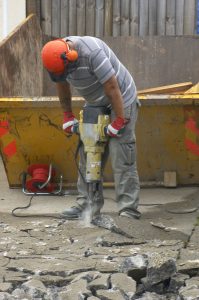The phrase “30-day trigger” has become all too common on job sites. This is the practice of hiring, then firing, workers after a 29-day period, in order to avoid required OSHA medical testing. This dangerous loophole comes from OSHA’s exposure limits for hazardous conditions. According to the administration’s guidelines for lead in construction, if an employee’s airborne exposure is at or above the action level for more than 30 days within any consecutive 12-month period, an immediate medical consultation is required.
Some employers believe they can simply avoid fines and shutdowns with “well-timed” layoffs or rotations, but OSHA officials are well aware of these tactics. Just as the IRS knows if you’ve been hiding money, OSHA knows if you’ve been bending compliance rules, which puts your company and team members at serious risk.
Cutting Corners on OSHA Medical Testing Leads to Health Risks & Heavy Fines
Rotating workers may seem like an easy out to employers, but these actions can have dire consequences for companies and employees alike. With high exposure levels, even 29 days can mean a lifetime of negative health effects for employees. For this reason, OSHA has implemented certain rules into standards, such as Cadmium’s CFR 1926.1127(f)(1)(iv), stating that “the employer shall not use employee rotation as a method of compliance.”
In other standards, such as crystalline silica, employee rotation is allowed to a certain point. However, if an employee is exposed to silica at or above the action level for more than 30 days per year, then the rule triggers medical surveillance. To put it into perspective, one standard paver cut releases 9 million micrograms of silica, or enough to exceed 10,714 days of dust exposure. According to IQPowerTools.com, if a worker was to breathe in 100% of the dust from that paver, he/she would be taking in over 29 years worth of silica in the OSHA PEL. With approximately 2.2 million workers being exposed to respirable crystalline silica each year, it’s no wonder that OSHA instituted a new rule — set to go into effect on Sept. 23 — to better regulate the substance.
If putting employees at serious risk of illness and possible death isn’t reason enough to warrant a proper medical surveillance plan, then perhaps fines and shutdowns are. In 2016, a Wisconsin-based shipyard chose not to have workers tested for overexposure to toxic heavy metal, even after receiving several complaints of symptoms. A contracted employee had his own medical testing conducted outside of the company, which concluded that he had toxic levels of lead in his bloodstream. Not only did work on the job site come to a halt, the shipyard company had to pay $700,000 in fines in order to avoid admitting fault or liability for the OSHA violations.
Why Risk It?
Even if your company does avoid OSHA fines, law firms countrywide have litigators dedicated to workplace toxic exposure cases. Last year, a New Jersey employee was awarded $1.8 million for medical expenses, lost wages and general damages due to toxic mold exposure at work. No one wins when employers refuse to take proper precautionary actions.
Bending the rules to avoid medical testing just isn’t worth the risk. Especially now, when medical companies are making it easier than ever to get testing done. Worksite Medical has a fleet of mobile medical units that can come directly to your worksite, and perform all medical surveillance testing in as little as one day. Furthermore, with the convenience of onsite testing, employees can return to work immediately following their medical surveillance exams, thus no productivity is lost.
Keep your team and your company safe, and OSHA compliant.
Learn more about how Worksite Medical can keep you and your employees in compliance with silica physical exams and medical surveillance testing.
Give us a call at 1-844-622-8633, or complete the form below, to schedule an on-site visit today.




